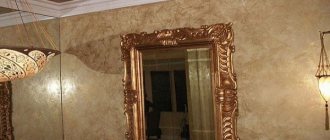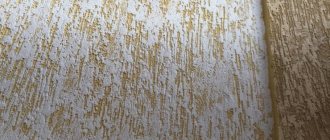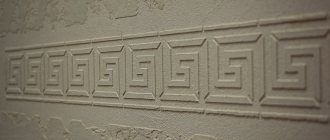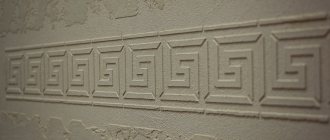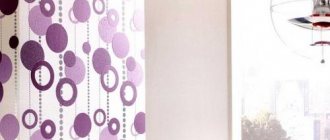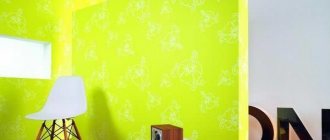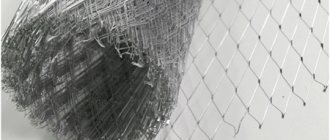When renovating apartments and houses, owners try to make them look not only neat, but also beautiful and original. Many property owners today, of course, have already abandoned simple whitewashing of walls. Decorative textured plaster can also be used to decorate enclosing structures indoors and facades. In some cases, this design may also be two-color. Later in the article we will look at how to paint decorative plaster in a similar way.
How to choose paints and varnishes
There are two main ways to paint decorative plaster in two colors:
- tinting the mixture itself before application;
- painting the finished plastered surface.
The first design method is used very rarely. Decorative plaster from almost all modern manufacturers should be painted after application to the walls.
There are many ways to do this. In this case, the answer to the question of what paint to paint decorative plaster can be, for example, the following:
- water-based;
- latex;
- acrylic.
When choosing paints and varnishes for painting walls, you should definitely pay attention to what type of work they are intended for. To decorate facades, of course, choose paints whose composition allows them to be used outdoors. For indoor use, products that are cheaper and less resistant to high humidity and temperature changes are used.
Glaze
The glazing composition (glaze) can be applied to both textured and smooth surfaces. It is used for both internal and external work.
Using glaze has a number of disadvantages:
- It is necessary to shade the joints immediately after applying the glazing composition.
- Surfaces should be covered with the material in small strokes. For this reason, working with compositions takes a lot of time.
- Before applying the composition, you need to wear special gloves. If a person feels dizzy or suffocated, respiratory protection may be necessary.
- You can work with the compositions at a temperature not lower than 10ºС.
Preparing the walls
Is it possible to paint decorative plaster with paint? The answer to this question is obvious. Of course yes. However, before using such a product, the surfaces themselves must, of course, be prepared in the most thorough manner.
Whatever paint and varnish material is chosen for the decoration of premises or facades, the plastered surface must be primed before using it. Otherwise, the paint will subsequently begin to peel and peel off quickly.
You should start painting decorative plaster only after the primer has completely dried. A product that increases wall adhesion is applied to the surface, usually in two layers.
Care of the treated surface
The main problem with varnished walls is dust settling. A vacuum cleaner can be used to remove dust. Wet cleaning with a sponge and soapy water is also allowed. The walls are cleaned with the preparations specified in the instructions for the varnish.
Manufacturers of LKS produce products for the care of varnished surfaces:
- Clinker concentrators are used 1-2 times a week;
- Removers for removing heavy dirt;
- To renew the varnish, polishes are used 3-4 times a year;
- Reducers based on polyurethane dispersion (no more than once every six months).
Painting methods
So, we found out how to choose paint and varnish materials for decorating walls in two colors. But how to paint decorative plaster correctly when choosing this finishing method? The walls in the rooms look quite original even when using the usual method of contrasts. In this case, some parts of the rooms or facades are simply painted one color, and others another.
But very often, more complex technologies can be used to decorate walls in two shades, allowing you to obtain a very original design. In this case, at the first stage, paintwork materials of the same color are usually applied to the entire surface. Next, on top of this layer, the walls continue to be decorated with paint of a different shade. The following finishing methods can be used:
- star dust;
- old surface;
- abstract pattern;
- wrinkled skin.
Also, painting walls finished with decorative plaster can, of course, be done using a stencil.
What is marble plaster?
Marble plaster was first used in Ancient Rome and Egypt. Over the entire period of its use, the finishing coating has proven to be an excellent material, which is why it is used until today.
To produce the mixture, manufacturers use only high-quality and most reliable materials. The products contain minerals and acrylic polymers.
A certain amount of marble or granite chips (in the form of small rounded grains) is also added. Marble plaster receives a natural shade or can be painted using modern technologies. In order to improve the characteristics of the mixture, additional components can be used. Due to this, the coating will withstand fairly high temperatures and various types of loads. The material itself becomes plastic and has a good adhesion rate.
To make marble plaster more beautiful and attractive, the composition may contain special varnishes or sparkles, mother-of-pearl, etc.
star dust
In this case, a paint material of a different color is simply applied to the painted surface using a very hard brush. The main task of the painter when performing this technology is to obtain clearly defined specks of different sizes on the walls. Surfaces are finished using this technique as follows:
- the brush is dipped into the paint and wrung out thoroughly;
- bring it to the wall, bend the pile back and release it.
As a result, small drops of paint begin to fly onto the wall, thereby achieving the stardust effect.
Pros and cons of working with a roller
Using a roller to paint any walls has many advantages over classic brush painting:
- coverage of a larger area;
- saving time;
- the ability to replace the roller within a minute depending on the work performed;
- working with various types of surfaces;
- a more even result of applying paint without drips or streaks;
- economical paint consumption;
- the ability to work at heights by extending the handle.
However, there are some disadvantages to this tool:
- the cost of a roller is higher compared to a brush;
- difficulty in processing corners, joints and thin elements;
- the need to frequently replace the fur coat.
However, if you take into account all the features of working with the tool, you can save money and paint everything that needs to be painted.
The range of rollers is quite large: for each operation you can select a tool of a certain type and design of the element being painted.
There are several main types of rollers for painting ceilings and walls:
- Velor. This is the best option for applying oil-based and water-based paints. The pile of the roller coat is short, so there is no chance of it being left on the walls. The application of the layer is uniform and smooth, without streaks.
- Foam rubber. Made from synthetic polyurethane. Such foam rubber models are used for priming, for applying water-dispersion paints and other inactive compounds. Their main advantage is their low cost, easy cleaning and a spare tire included.
- Fur rollers are suitable for working with oil paints and enamels. For their manufacture, sheepskin or fur of artificial origin is used.
- Polyamide - rollers with the longest pile of twisted threads. More often sold in light green color. They are used for treating plasterboard surfaces over putty with water-based paints and enamels.
- Textured models have differences in design. They don't have a fur coat. The roller itself is made of rubber or similar hard materials. A certain pattern is applied to the surface. Such options are necessary for working with wet plaster.
According to their purpose, rollers are divided into:
- façade They are larger in size compared to other models. Suitable for outdoor use;
- frame;
- corner roller is suitable for fine work;
- for wallpaper;
- decorative foam rubber.
Each option is selected for specific tasks, so you cannot purchase one roller for all surfaces.
How to paint decorative plaster in two colors: old surface
This technology of painting decorative plaster in two colors is also called stippling. In order to “age” the surface of the walls, in this case a wide flat brush is used.
For decoration, a special glaze is first applied to an already painted wall. Next, without waiting for this layer to dry, the master begins to touch the surface in different places with a flat brush. Ultimately, an original texture is formed on the walls.
Components of the roller
The wall paint roller can be divided into two parts: the machine and the cylinder. The first part, in turn, also consists of two parts - the yoke and the handle. These details may vary.
Varieties of handle
The handle should be comfortable for the hand; it is usually wooden or plastic. The most important thing is that it is convenient to paint with, so it is required that the weight of the cylinder does not exceed the handle, otherwise it will be difficult to hold the tool.
Attaching the nozzle
The main part can be fastened with 3 different fasteners: a rigid type, which does not make it possible to remove this part; with a connecting coupling, the roller coat can be removed to replace it with a new one; with a frame, the device can be used many times without a core.
The choice for this parameter is made based on the preferences of the master.
Types of materials
Most types are divided by base material: foam rubber, fur, velor, polyamide, polyacrylic, polyester, threads. They differ in the characteristic type of paint application; the cost of rollers also varies.
Design using abstract pattern technique
Next, let's see how to paint decorative plaster using this chaotic method. To finish the walls in this way, the home craftsman will need to make his own special tool - a roller with a “torn” surface. To do this, you just need to take a regular roller and secure the tissue flagella folded several times along its entire length. Such elements need to be secured with fur or foam rubber using two simple knots. The strips of fabric on the working part of the roller should be held as firmly as possible.
By painting a wall with such a tool, you can get a very unusual chaotic pattern. In addition to the fact that the surfaces in this case turn out to be unusual and original, the work can be done very quickly when using a torn roller.
Tools
If decorative plaster with painting is done on your own, then you should prepare the tools necessary for the work:
- ladder;
- mixing containers;
- mixing spatula;
- rollers of various sizes (from foam rubber or pile);
- rags to prevent contamination of the floor and walls.
If complex painting is planned for the walls, with highlighting of fragments and many colors, the following will be additionally useful:
- brushes of different sizes;
- foam sponges;
- gauze;
- stencils.
To prevent color mixing, prepare several sets of tools, one for each.
How to paint decorative plaster with your own hands: the effect of wrinkled leather
Using this technique, you can also design very original rooms or facades in the house. Vinyl paint is most often used for this type of decor. To perform work using this method, paper is also prepared.
In this case, the walls are painted using approximately the following technology:
- apply the first layer of paint to the walls;
- apply and crumple decorative paper;
- apply a second layer of paint;
- remove excess from the folds.
Using a stencil
Many apartment and house owners would probably like to learn how to properly paint decorative plaster in two colors. The technologies described above make it possible to obtain quite beautiful surfaces. But, of course, pronounced drawings with specific subjects can only be applied to the walls using a template.
You can develop stencils for decorating walls using paint of a different color yourself or buy ready-made ones for the appropriate theme. Today there are many different patterns and designs for decorating walls.
The technology of painting using stencils is very simple. The template is simply applied to the wall and then painted over.
How to apply the first layer correctly
Of course, a beautiful two-color finish on plastered walls will only work if they are designed correctly, including at the initial stage. Before applying the first coat of paint on the surface, you need to wait until the primer has completely dried. In this case, the actual wall finishing itself is performed as follows:
- The corners of the room and those areas where the furniture will subsequently be located are the first to be painted;
- They try to apply the paint on the surface evenly in thickness and at the same speed in different areas.
The wall is painted before applying the second color, usually in several layers. Most paints used for decorative plaster have a fairly liquid consistency. This is necessary so that all sorts of sagging and pieces do not remain on the treated surfaces. However, the first time, white plaster may not be painted over when using such liquid products.
Tools
Painting tools for such types of work should include the following set:
- Roller . It differs from the length of the pile. You should choose the one that matches the texture of the surface. In addition, you need to take into account the features of the pattern that remains after the tool is applied.
- Various brushes . The width of the brushes is important, on which the thickness of the application of the decorative pattern depends.
- Tray . It is important to have a container into which you can pour the paintwork.
In some cases, in addition to standard tools, you can also use a special spray gun. The speed and quality of work increases significantly with this method. The plaster layer must be completely dry , after which it is treated with several layers of plaster. Blistering and cracking of paint cannot be avoided unless certain preparatory work is done.
Color combinations
Of course, before you start decorating the walls, you should decide what color to paint the decorative plaster. Paintwork materials of any shade can be used to decorate such surfaces. However, combinations of tones when decorating surfaces in this way should be chosen correctly. It is believed that the following are best suited for decorating rooms and facades in this way:
- close or related colors (beige and gray, white and black);
- gradients (paints of the same color, but different shades).
You can also select paints for finishing that are similar in temperature, saturation and sound. For example, orange goes well with green paint, and olive paint goes well with peach.
What is it needed for
A wall paint roller facilitates the process of covering the surface with the chosen solution. With it you can cover large flat surfaces with less effort and time.
The wall roller allows you to use wide strokes to immediately cover most of the base. Suitable for coating materials and for applying adhesives and other materials. For each tool, a specific tool is selected.
How to tint the mixture correctly
So, we found out how to paint decorative plaster correctly. Most often, this coating is finished in two colors after the mixture has been applied to the walls and it has completely dried. However, sometimes such plasters are tinted at the preparation stage. In this case, the technology is usually used as follows:
- mix the plaster itself in a bucket;
- draw into a large syringe (color), focusing on the divisions;
- squeeze the paint into a bucket of plaster;
- mix the solution thoroughly with a construction mixer.
Decorative bark beetle plaster is usually tinted this way. By preparing solutions of two different shades and using a little imagination, you can effectively and originally decorate rooms or facades with a colored composition.
Tinting
Decorative plaster, sold in the form of a dry mixture, is white or gray in color.
It can be colored immediately when mixed with water. To do this, use tinting aqueous solutions or pastes, which are added directly to the container with plaster. The amount of color depends on the desired color saturation. Addition occurs with constant stirring. This is the simplest method of painting decorative plaster, used to obtain the base color of the walls. Tinting has its advantages over painting the surface in that later scratches and chips of the plaster will be less noticeable.
